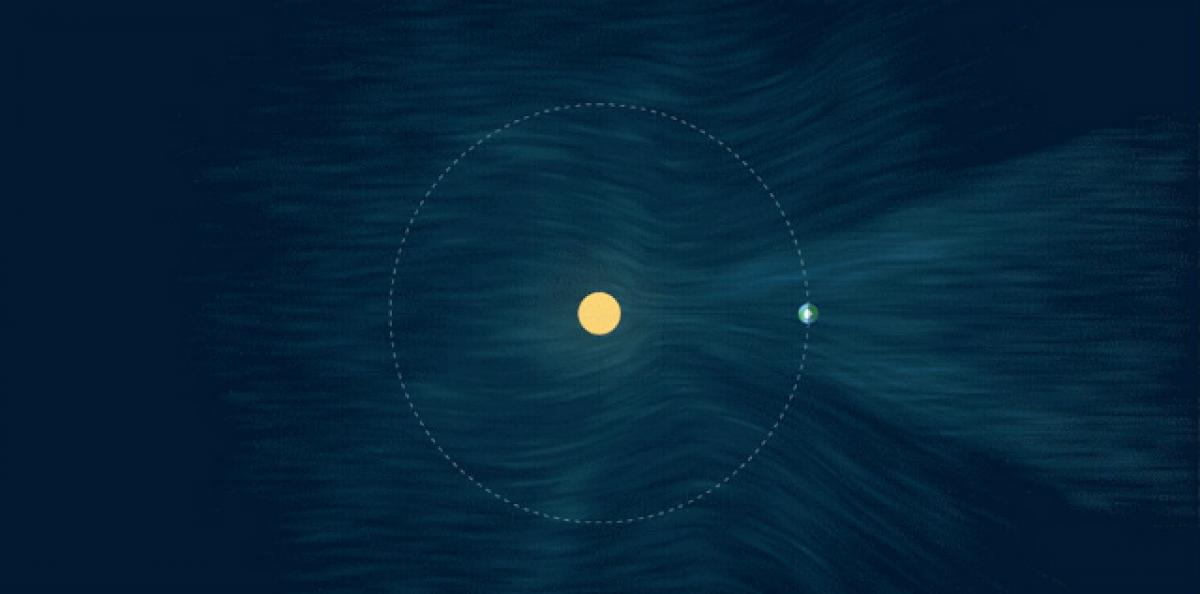Live
- Parents, teachers urged to let children grow freely
- Should State govt crack its whip on Endowment Department's functioning?
- Temple affairs a big task for EOs while few enjoy H.O. cushy stints
- RTA flounders on despatch of documents to motorists in city
- Police destroy ganja plantation
- UBI gesture to 3 welfare hostels
- Overwhelming response to Vijayawada Marathon
- Public Garden stepwell rots in apathy, walkers raise a stink
- Dinakar to send report to CM for justice to victims
- GHMC wakes up from slumber, out to tame stray dog menace
Just In

A NASA-funded sounding rocket to study the origin of X-rays in the universe has helped scientists reveal a new mystery - an entire group of X-rays that don\'t come from any known source. Some of this invisible light that fills space takes the form of X-rays, the source of which has been hotly contended over the past few decades.
Washington:A NASA-funded sounding rocket to study the origin of X-rays in the universe has helped scientists reveal a new mystery - an entire group of X-rays that don't come from any known source.
Some of this invisible light that fills space takes the form of X-rays, the source of which has been hotly contended over the past few decades.
The DXL (Diffuse X-ray emission from the Local galaxy) sounding rocket was launched from White Sands Missile Range in New Mexico in 2012 to study the source of certain X-rays observed near Earth.
In a new study, DXL's data confirms some of our ideas about where these X-rays come from, thus strengthening our understanding of our solar neighbourhood's early history.
The two known sources of X-ray emission are the solar wind and the Local Hot Bubble - a theorised area of hot interstellar material that surrounds our solar system.
"We show that the X-ray contribution from the solar wind charge exchange is about 40 percent in the galactic plane, and even less elsewhere," said Massimiliano Galeazzi, astrophysicist at University of Miami.
"So the rest of the X-rays must come from the Local Hot Bubble, proving that it exists," he added.
However, DXL also measured some high-energy X-rays that could not possibly come from the solar wind or the Local Hot Bubble.
"At higher energies, these sources contribute less than a quarter of the X-ray emission," noted Youaraj Uprety, lead author and astrophysicist at University of Miami at the time the research was conducted. "So there's an unknown source of X-rays in this energy range."
"We think that around 10 million years ago, a supernova exploded and ionized the gas of the Local Hot Bubble," said Galeazzi.
But one supernova wouldn't be enough to create such a large cavity and reach these temperatures - so it was probably two or three supernova over time, one inside the other.
"Identifying the X-ray contribution of the Local Hot Bubble is important for understanding the structure surrounding our solar system," added Uprety who is now astrophysicist at Middle Tennessee State University.
It helps us build better models of the interstellar material in our solar neighbourhood, the authors noted in a paper published in the Astrophysical Journal.

© 2024 Hyderabad Media House Limited/The Hans India. All rights reserved. Powered by hocalwire.com







